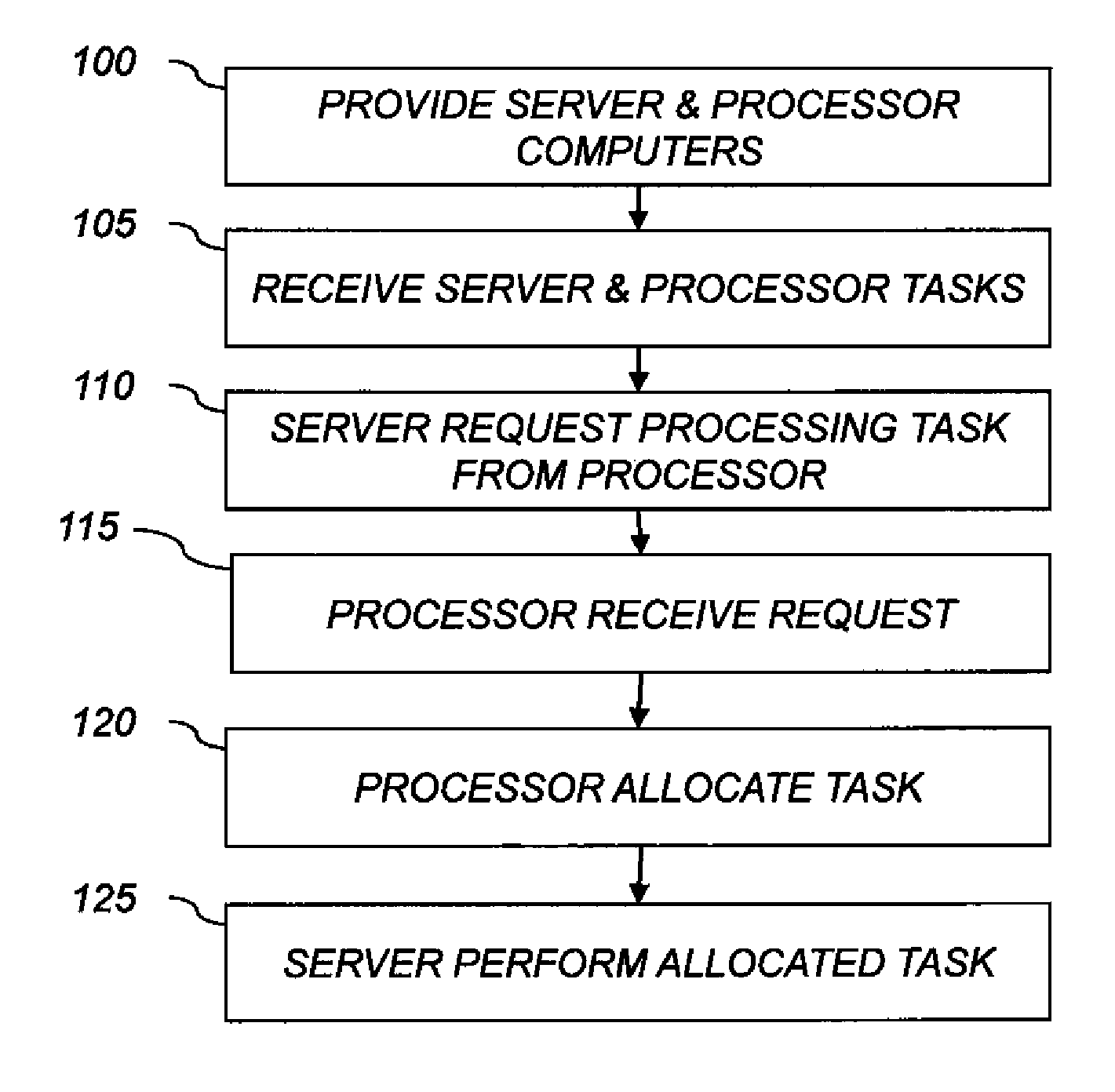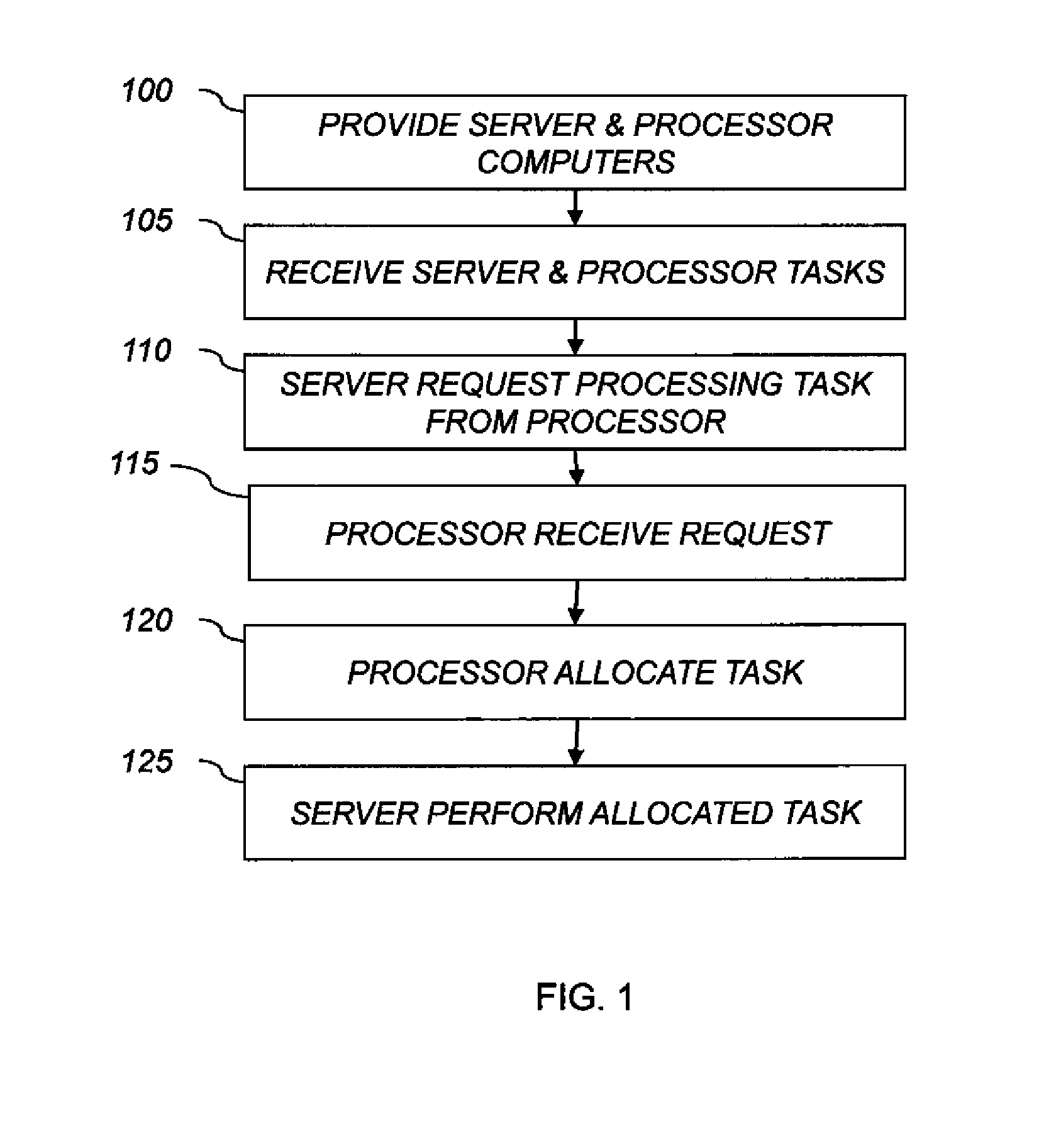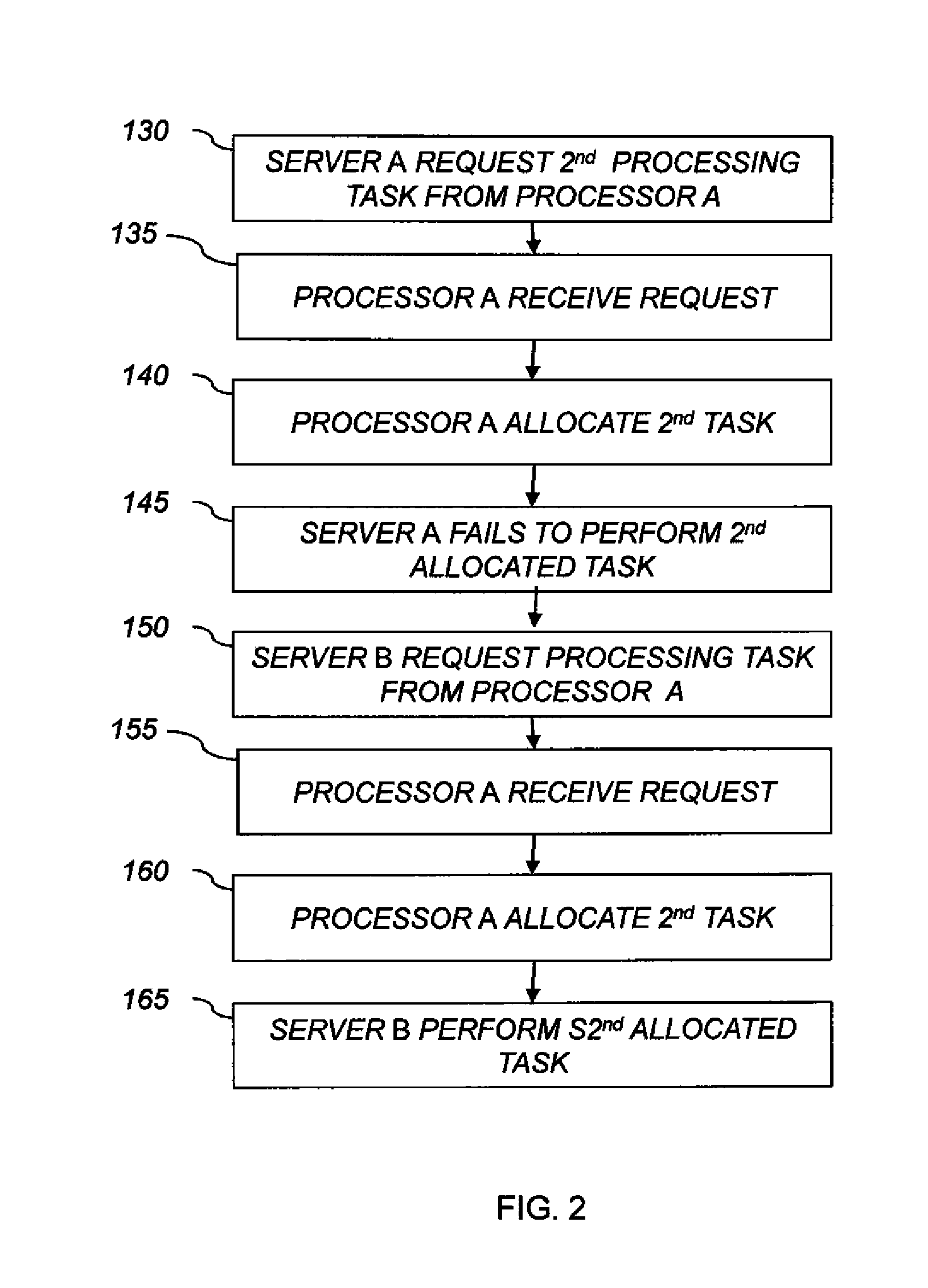Task allocation in a computer network
a computer network and task technology, applied in computing, digital computers, instruments, etc., can solve the problem that allocated processing tasks cannot be processed, and achieve the effect of avoiding the failure of allocation
- Summary
- Abstract
- Description
- Claims
- Application Information
AI Technical Summary
Benefits of technology
Problems solved by technology
Method used
Image
Examples
Embodiment Construction
[0026]The present invention addresses the efficient allocation of processing tasks among a plurality of interconnected computing resources, particularly where one of the interconnected computing resources has a capability not shared by all of the interconnected computing resource, for example data-storage capabilities, operating upon particular data elements, or data-processing capabilities. In particular, the present invention is useful for imaging systems in which a plurality of image-storage computers each store a different subset of images and are interconnected to a set of image-processing computers that process the images. One or more of the processing tasks can be indeterminate. An indeterminate processing task is one for which it is difficult or impossible to predict the amount of time needed to accomplish the processing task with a given resource. Image processing or image rendering tasks can, in some cases, be indeterminate.
[0027]The computing resources can be heterogeneou...
PUM
 Login to View More
Login to View More Abstract
Description
Claims
Application Information
 Login to View More
Login to View More - R&D
- Intellectual Property
- Life Sciences
- Materials
- Tech Scout
- Unparalleled Data Quality
- Higher Quality Content
- 60% Fewer Hallucinations
Browse by: Latest US Patents, China's latest patents, Technical Efficacy Thesaurus, Application Domain, Technology Topic, Popular Technical Reports.
© 2025 PatSnap. All rights reserved.Legal|Privacy policy|Modern Slavery Act Transparency Statement|Sitemap|About US| Contact US: help@patsnap.com



